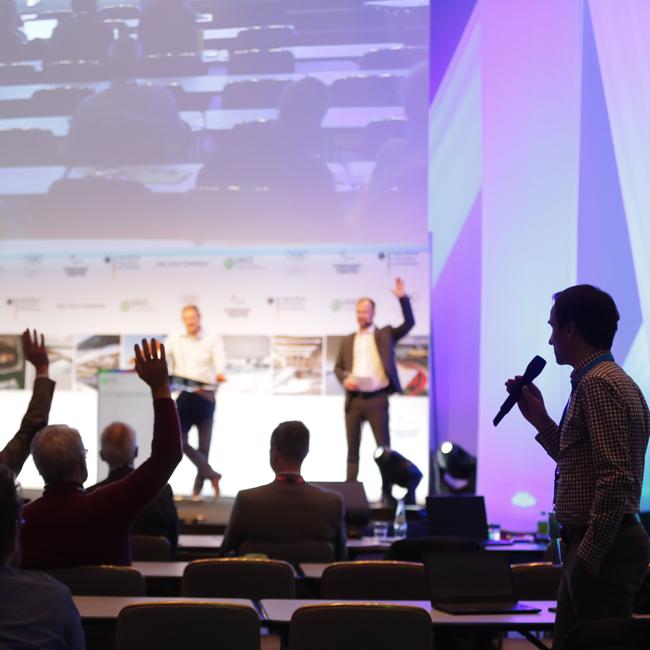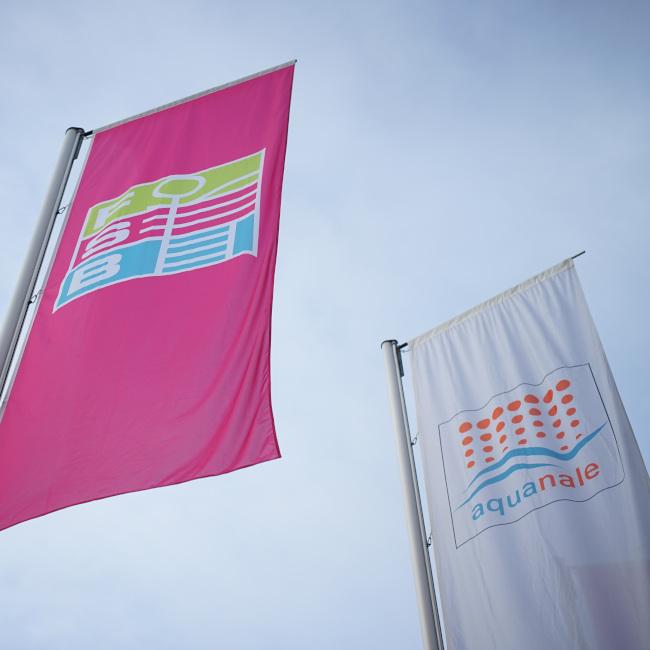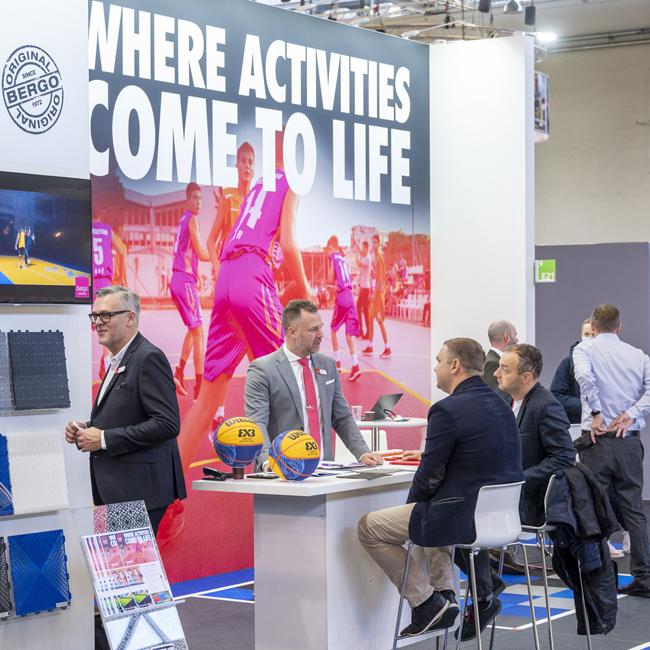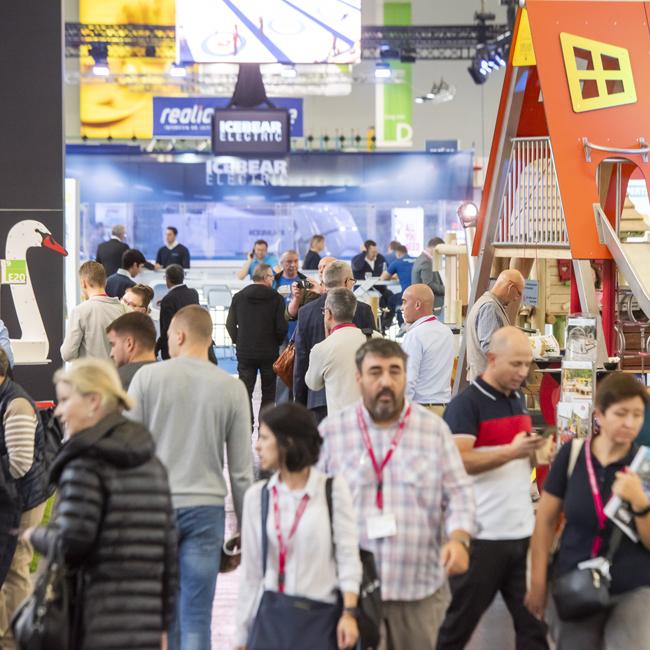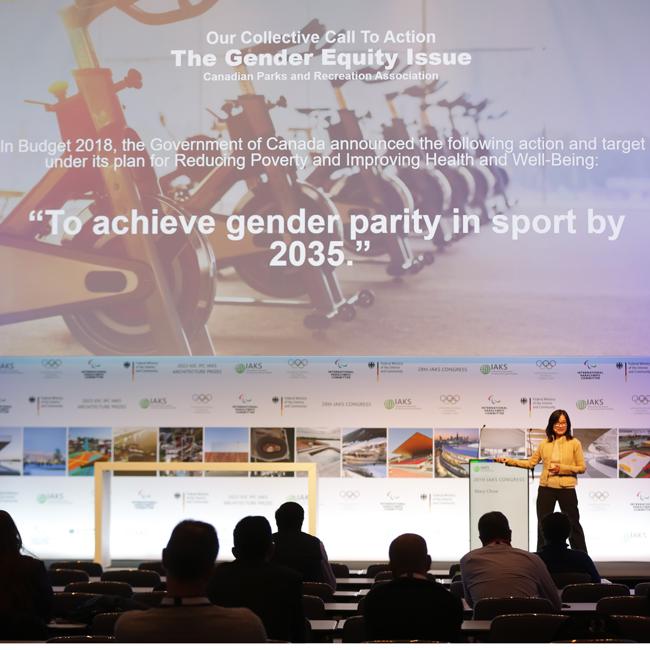2017 IOC IPC IAKS Architecture Prizes: Exemplary community sports and leisure facilities
The second congress day started with a session on some of the winning projects of the 2017 IAKS IOC IPC Architecture Prizes. The presentations were moderated by jury member and Accessibility Consultant Mark Todd.
Steffan Robel, Managing Director of A24 Landschaft Landscape Architecture, presented the Kohlelager Landau recreational facility, a Gold-winning project. Given changing sporting preferences, sports facilities must offer greater flexibility and more opportunity for individual sports so that all generations can benefit from what is on offer. The Kohlelager facility is distinguished by its integration of traditional and new sports. The former military barracks site offers a combination of nature, sporting facilities and concrete installations. Sport and play are intertwined. Physical activity is encouraged and children in particular are motivated to take up competitive sport through playful interaction.
Anastaciia Tcyganova, Gold medallist of the 2017 IAKS IOC IPC Architecture and Design Award for Students and Young Professionals, presented her Saratov Velodrome design study. She emphasised the needs of different types of cyclists as well as artistic and functional design and the possibility of combined use by incorporating a great deal of research in her design study. The Saratov velodrome is designed to encourage residents and tourists to improve their sporting skills and to adopt a healthy lifestyle.
Victors Jaunkalns, founder and owner of MacLennan Jaunkalns Miller Architects, showcased the Branksome Hall Athletics & Wellness Centre in Toronto, a Silver-winning project. The large volume had to fit onto a tight buildable footprint responding to the 12-metre height restriction on the grounds of the private girls’ school. The hall was designed to allow transparency, use natural light and prevent glare as well.
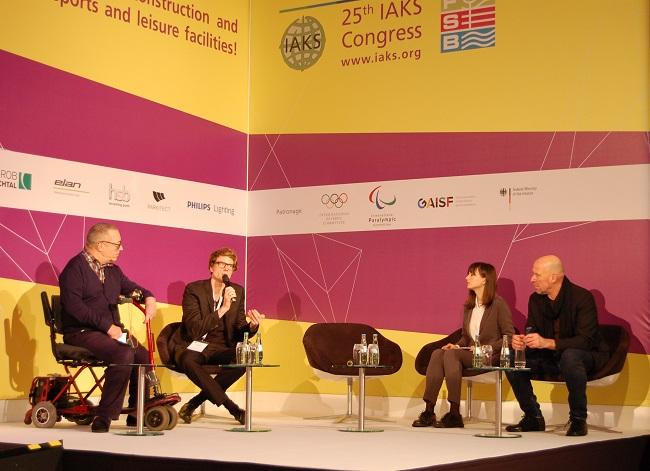
from left to right: Mark Todd, Steffan Robel, Anastaciia Tcyganova, Victors Jaunkalns
photo: IAKS
Innovative funding and delivery models for community sports and leisure projects
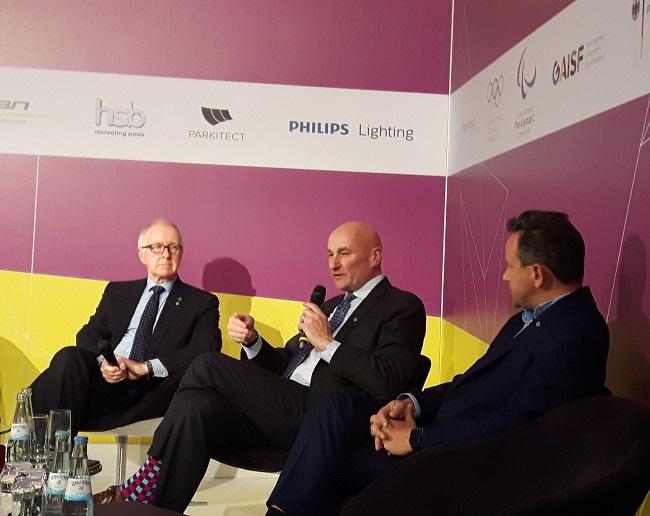
from left to right: Conrad Boychuk, Ron Bidulka, Zbigniew Klonowski
photo: IAKS
The workshop for delegates to discuss challenges and exchange expertise was moderated by Conrad Boychuk, Senior Director of Recreation and Venue Development at HDR | CEI Architecture Associates. A variety of completed projects were discussed that highlight a broad range of unique mechanisms that have the potential to be adopted internationally.
Managing Director at PricewaterhouseCoopers Ron Bidulka gave insight into how to eliminate the funding gap for sports and leisure projects. Fundraising and third-party equity are potential financing solutions. In terms of operation, broadening the facility’s user base, employing a third-party event manager or incorporating revenue-positive features like commercial areas are among the methods worth considering. For Bidulka, a flexible combination of both capital sources and operational distribution are a key factor for successfully filling the funding gap.
Rick Kozuback, President and CEO at International Coliseums Corporation, explained outstanding strategies used in the USA for filling the funding gap. Federal and US-state governments have programmes for subsidising projects. Relying on voter-approved initiatives, taxes can be increased for the purpose of a project. This innovative approach is an exemplary way to reduce the burdens often affecting municipalities when it comes to financing community sports and leisure projects.
2017 IOC IPC IAKS Architecture Prizes: Exemplary community sports and leisure facilities - part 2
Community sports projects of the 2017 IAKS IOC IPC Architecture Prizes were presented in the afternoon session. The moderator was Wolfgang Becker, Jury Member of the 2017 IOC IPC IAKS Architecture Prizes and Director of the University and Provincial Sports Centre in Rif, Salzburg, Austria.
Ana Paula Polizzo, Director and Partner at OA | OFICINA de Arqiutetos, talked about the prize-winning project Arena do Futuro in Rio de Janeiro. She illustrated how comprehensive and extensive planning and management of a major event sports facility can result in a sustainable plan for legacy use. The Arena do Futuro will be re-used to build four schools in Rio.
Gildo Incitti, Founder and Partner at NIS Architects and Silver-winner of the IAKS IOC IPC Architecture and Design Award for Students and Young Professionals, introduced his design study for a stadium for the 2020 Tokyo Olympic Games, named Cinqueanelli. To prevent it becoming a white elephant, he designed a stadium integrated in the city. His main design idea was the five Olympic Rings – Cinqueanelli in Italian.
Associate Director at Arup Associates Chris Dite introduced the Singapore National Stadium and Sports Hub, a Gold-winning project. It is an extremely flexible stadium for all sports. Its roof can be adapted to different types of event and weather conditions. Special focus was given to the openness of the stadium, as it is integrated in its surrounding context.
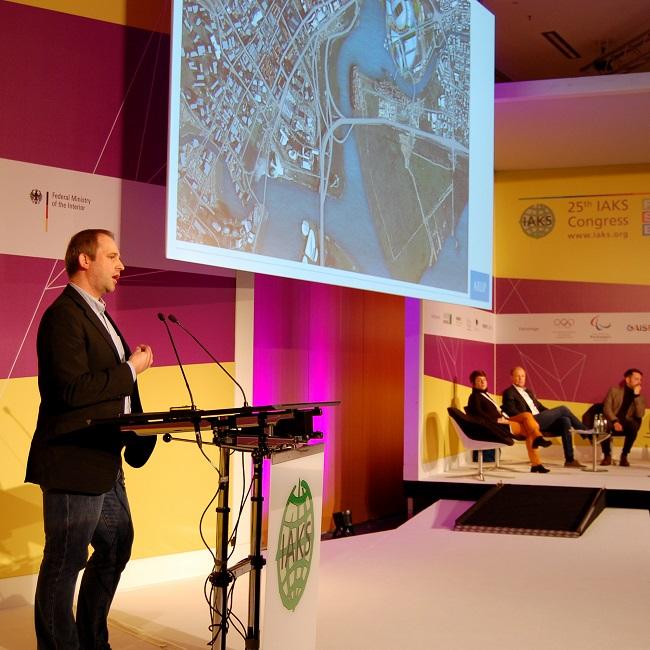
Chris Dite
photo: IAKS
Strategies for enhancing physical activities in the community
The workshop moderated by Prof. Dr Robin Kähler, Chairman of IAKS Germany, invited the participants to discuss the challenges in finding the right strategy supported by appropriate levels of funding for maintaining and developing healthy communities.
Wolfgang Baumann, Secretary General at TASIFA (The Association For International Sport for All), showed how a municipality can be turned from a physically inactive to an active place. As the main provider of leisure activities, municipalities should invest more in using their resources and networks to prevent obesity and other mass diseases. The Global Active Label awarded to municipalities is an indicator of successful use of these resources, offering great health-related benefits to citizens.
Casper Lindemann of the Sports Confederation of Denmark named functionality and flexible thinking as key factors for success in promotion physical exercise in the community. Using unconventional and unused spaces within towns may be one way to improve sports and leisure opportunities. The diversity of new innovative ideas arising all over the world proves how many opportunities have been ignored so far. A lot of potential is to be found in strategic planning.
